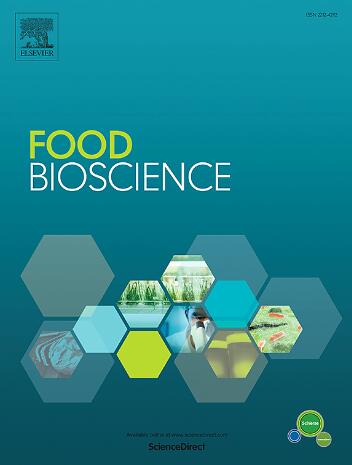Mechanistic insights into citral-induced cellular damage and its antibacterial efficacy against Listeria monocytogenes
IF 4.8
1区 农林科学
Q1 FOOD SCIENCE & TECHNOLOGY
引用次数: 0
Abstract
Citral is widely recognized as a membrane-targeting antimicrobial, with its bactericidal activity primarily dependent on the degree of membrane damage. This study reveals its dual mechanism involving oxidative assault against Listeria monocytogenes (L. monocytogenes). The induced cytotoxic effects appear closely associated with citral's interaction with bacterial cell membrane components and the resultant sustained membrane dysfunction. Our results showed that sublethal concentrations of citral induced rapid depolarization in L. monocytogenes while progressively increasing membrane permeability. Following 1 h of citral exposure, the intracellular generation of reactive oxygen species peaked. Further investigations indicated that citral could directly interact with and alter the chemical structure of reduced glutathione (GSH). Notably, exogenous GSH supplementation significantly attenuated citral's antimicrobial efficacy, suggesting that its biochemical reactivity targeting glutathione and related thiol-containing proteins plays a critical role in the antibacterial action against L. monocytogenes. Importantly, regardless of growth inhibition, all tested concentrations of citral significantly suppressed the hemolytic activity of L. monocytogenes. Overall, this study provides valuable insights into the antimicrobial mechanisms of citral, particularly at low concentrations.

柠檬醛诱导的细胞损伤机制及其对单核增生李斯特菌的抗菌作用
柠檬醛被广泛认为是一种膜靶向抗菌剂,其杀菌活性主要取决于膜损伤的程度。本研究揭示了其氧化攻击单核增生李斯特菌(L. monocytogenes)的双重机制。诱导的细胞毒性作用似乎与柠檬醛与细菌细胞膜组分的相互作用以及由此产生的持续的膜功能障碍密切相关。我们的研究结果表明,亚致死浓度的柠檬醛诱导单核增生乳杆菌快速去极化,同时逐渐增加膜通透性。柠檬醛暴露1小时后,细胞内活性氧的产生达到峰值。进一步的研究表明,柠檬醛可以直接与还原性谷胱甘肽(GSH)相互作用并改变其化学结构。值得注意的是,外源谷胱甘肽的补充显著降低了柠檬醛的抗菌效果,这表明其针对谷胱甘肽和相关含硫醇蛋白的生化反应性在对单核增生乳杆菌的抗菌作用中起关键作用。重要的是,不考虑生长抑制,所有测试浓度的柠檬醛都能显著抑制单核增生乳杆菌的溶血活性。总的来说,这项研究为柠檬醛的抗菌机制提供了有价值的见解,特别是在低浓度下。
本文章由计算机程序翻译,如有差异,请以英文原文为准。
求助全文
约1分钟内获得全文
求助全文
来源期刊

Food Bioscience
Biochemistry, Genetics and Molecular Biology-Biochemistry
CiteScore
6.40
自引率
5.80%
发文量
671
审稿时长
27 days
期刊介绍:
Food Bioscience is a peer-reviewed journal that aims to provide a forum for recent developments in the field of bio-related food research. The journal focuses on both fundamental and applied research worldwide, with special attention to ethnic and cultural aspects of food bioresearch.
 求助内容:
求助内容: 应助结果提醒方式:
应助结果提醒方式:


